
The history of scent is largely ephemeral. After all, the aromas of pressed lilies from the Nile banks or the precious ambergris, once worth more than gold, are hard to imagine if you’ve never smelled these rarities.
While the scent of these delicate perfume ingredients vanishes with time, countless examples of exquisite perfume bottles and containers remain to remind us of the history of the most-neglected sense. From ancient Egypt to modern Paris, the history of perfume bottles is entwined with the history of glassmaking, as well as broader artistic movements and each culture’s specific uses of perfumes.
Read on to learn more about the artistic history of perfume bottles.
You might be surprised at the long history of perfume bottles. Scroll down to learn more about the artistic history of these vessels.
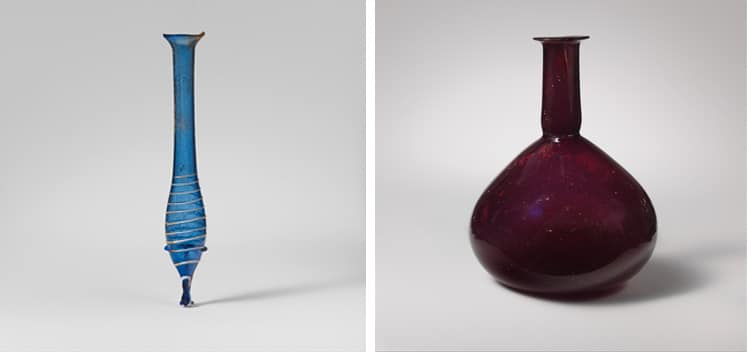
The production of perfumes in Europe took hold in the late Middle Ages. Guilds of perfumers were established to grow (and protect) the budding industry, which was closely nourished by royals and their courts. In the late 14th century, Hungarian court perfumers crafted Hungary Water, a perfume that mixed the traditional aromatic oils with alcohol. The alcohol-based perfume was perfected by the Italians in the 14th century, the liquid aqua mirabilis (marvelous water) was a powerful scented concoction. The need to bottle these luxurious perfumes coincided with the growing Venetian glass industry.
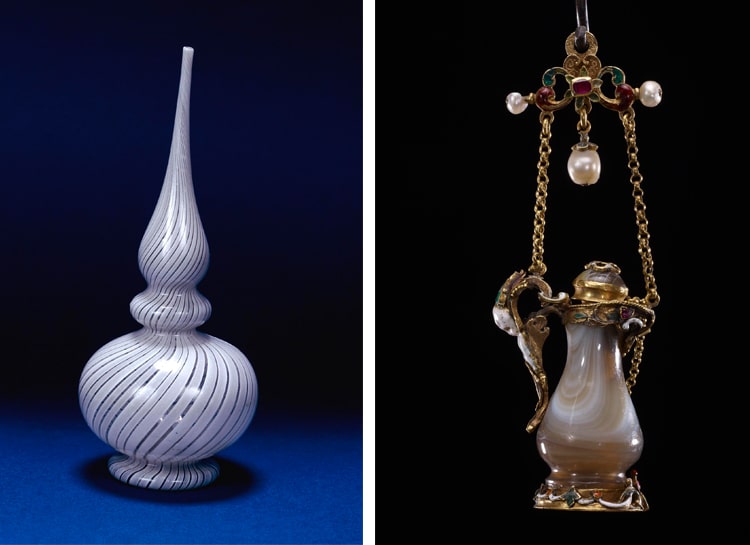
During the late medieval and Renaissance period, solid perfumes were housed in pomanders and worn on the body, while liquid perfumes were housed in exquisite vials. Venice became known for producing delicate, thin glass vessels in a style known as cristallo (meaning clear glass). This façon de Venise spread around Europe throughout the Renaissance, as both perfumery and glassmaking gained in popularity. In the 16th century, the Italian noblewoman Catherine de Medici became Queen of France, bringing her personal perfumer René the Florentine with her. She set a court fashion of perfumes laden with civet and musk, stimulating French production.
The perfume bottles of the late medieval and Renaissance period demonstrate a reinvigorated luxury and the ever-evolving techniques of artisans. The perfume sprinkler (above) would have been used to scent a room, and it demonstrates a classic Venetian cane-working technique. Perfume bottles could also be much smaller—and like the pomander—worn on the person. The scents of the nobility were often lavishly housed, such as the example in carved agate and gold set with rubies. These personal perfumes were handy in a world where bathing and personal hygiene were not up to modern standards.
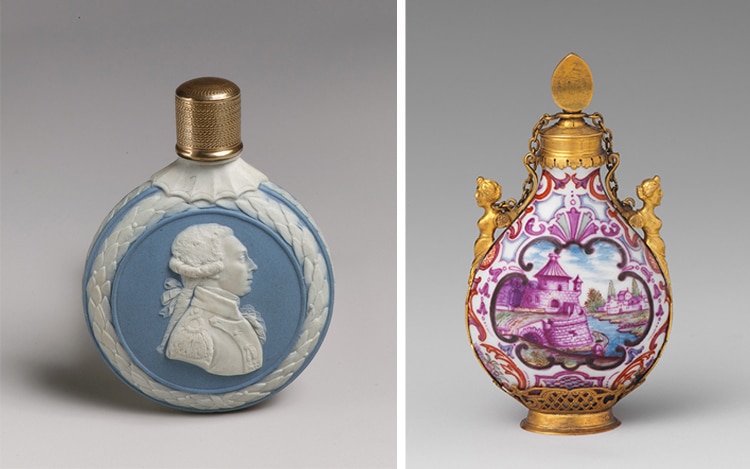
European perfume bottles of the 18th century were heavily influenced by the fashions and artistic movements of the day. Crafted in glass, porcelain, or even white glass masquerading as porcelain, scent bottles were no longer the sole provision of the fabulously wealthy. Global trade and the rise of a European middle class interested in luxury goods meant that commercially-produced perfumes were more widely available to those with disposable income. Borrowing from Neoclassical styles, the scrolls and gilding of Rococo design, and the Romantic pastoral scenes, perfume bottles followed the artists trends of both painters and the decorative arts. Production of perfume vessels was also no longer exclusive to Italy; fine examples could be found in London, Vienna, and other cities.
American Artistry
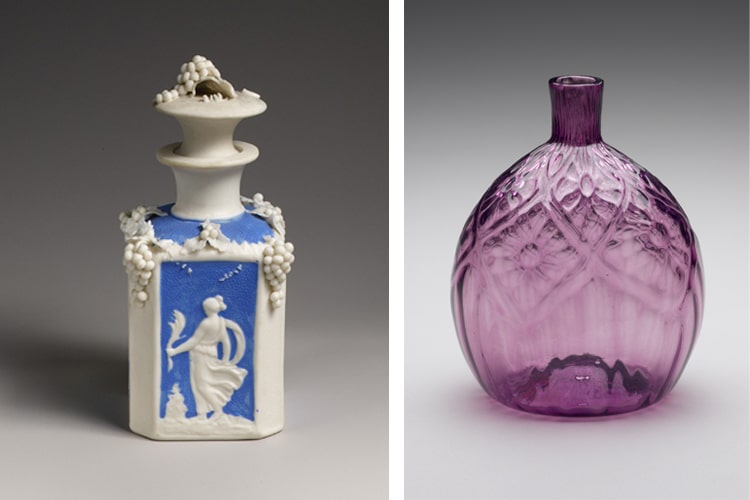
Glasswork came to the American colonies quite early; the first workshop was established at Jamestown in 1608. Domestic production would not match imports until the late 18th century. In the 19th century, mass production was increasingly possible due to the advancement of the Industrial Revolution.
For perfume bottles, Neoclassical designs were popular in Europe, but American consumers were also developing their own unique tastes. These trended towards ornate decoration and cut or molded glass. Jewelers such as Louis Comfort Tiffany created luxury works of art for the most affluent consumers, such as this perfume bottle cut of agate and decorated with gold and sapphires in an Art Nouveau style.
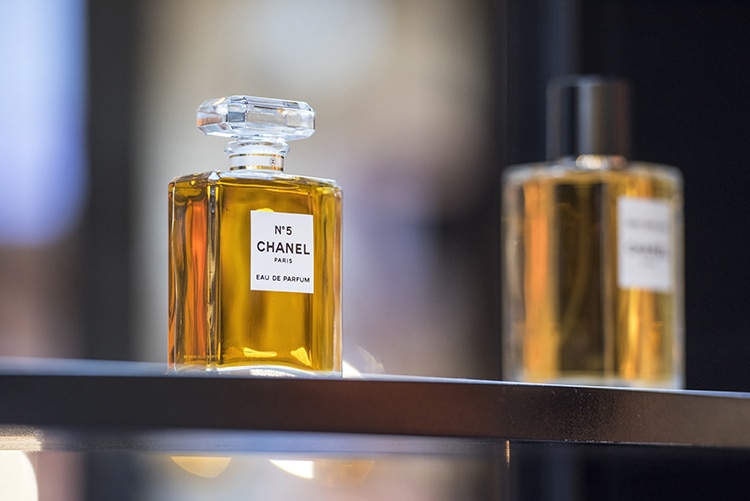
In the 20th century, some of the most famous names in glass and perfume established reputations that hold to this day. French jeweler René Lalique became known for his frosted glass perfume bottles. Many 20th-century perfume bottles featured an atomizer, a late 19th-century invention that produces a fine spray from a liquid. While perfume brands had name recognition in the 19th century, the bottles and brands became identifiable as part of a larger fashion milieu. The perfect example is Chanel No. 5, a fragrance introduced in 1921 by designer Coco Chanel.
Based on a 1924 design, the Chanel No. 5 was purposefully simple in reaction to the cut-glass works of the likes of Lalique. It was, and still is, clear; the amber-colored liquid is on full display. By the 1930s, smaller sizes were available for the ease of the modern woman on the go. The perfume and its signature bottle remain iconic, from being name-dropped by Marilyn Monroe to cameos in music lyrics today.
Perfume bottles today are heavily branded, unlike the largely anonymous pieces of ancient times. However, with careful product design, the perfume bottle remains a work of art.

